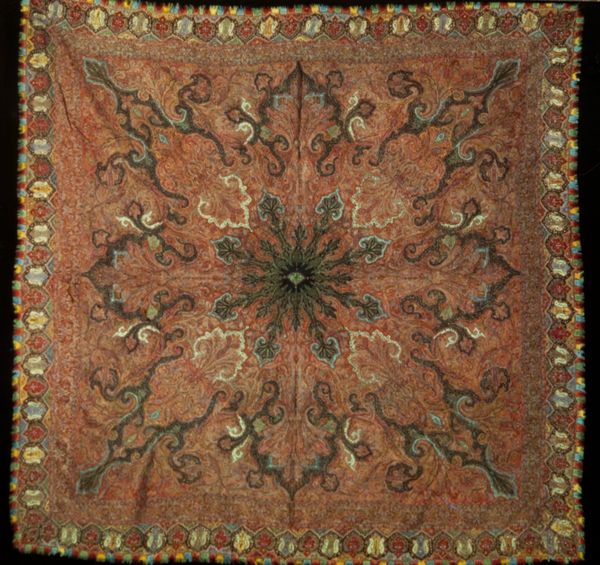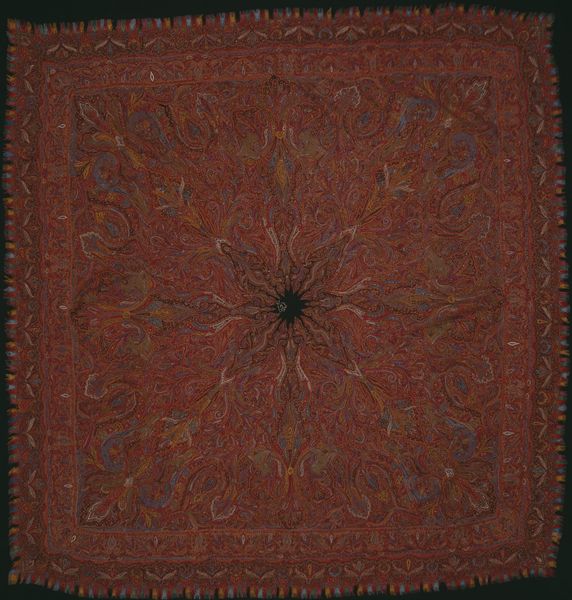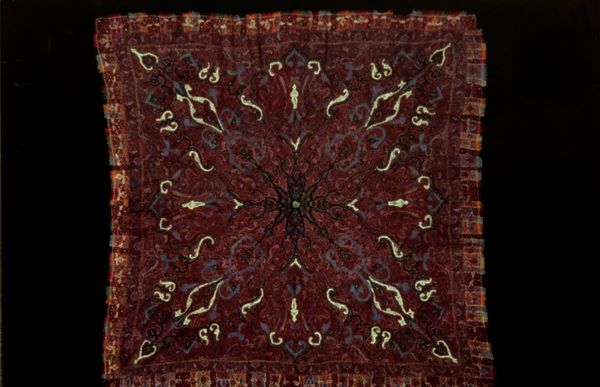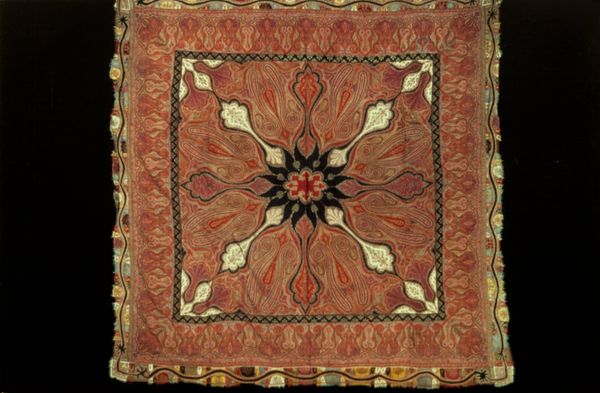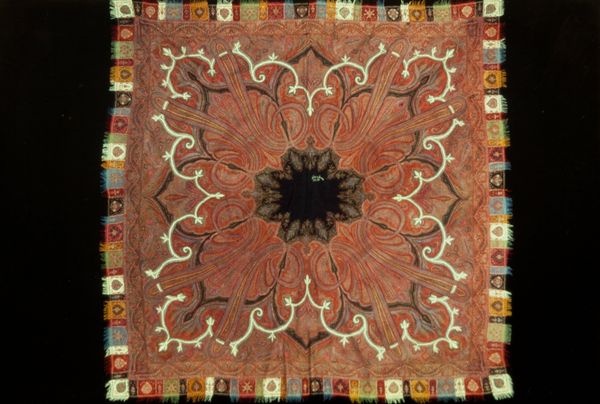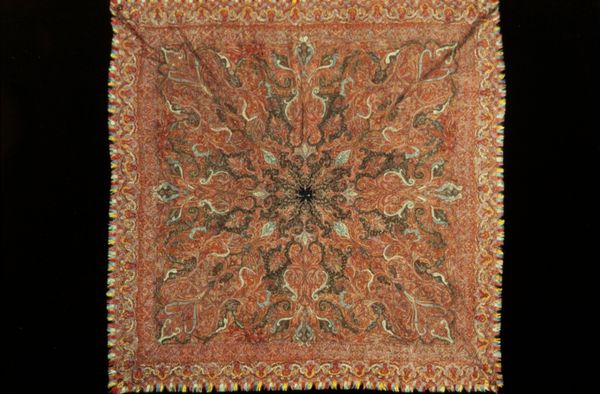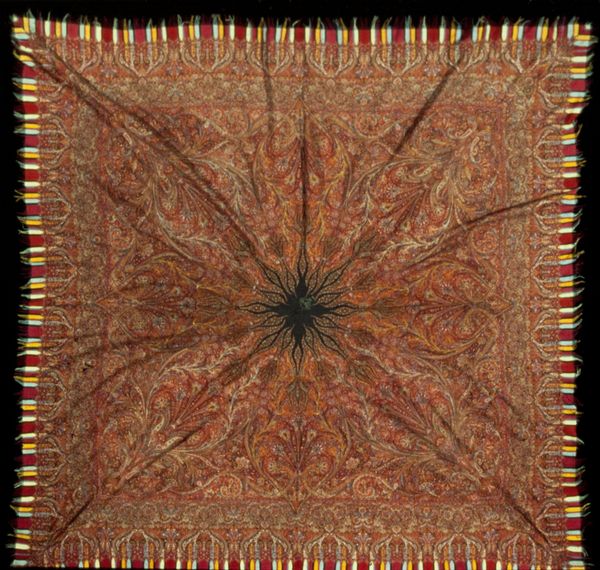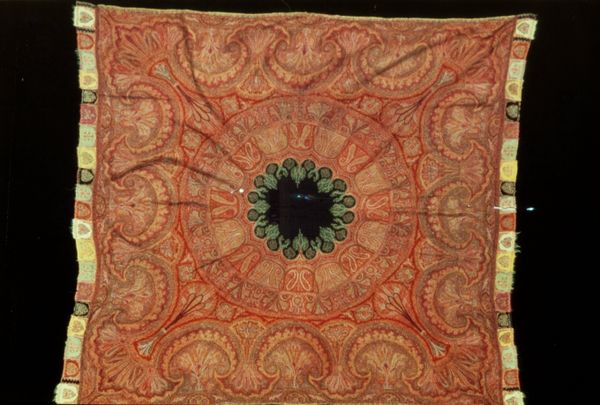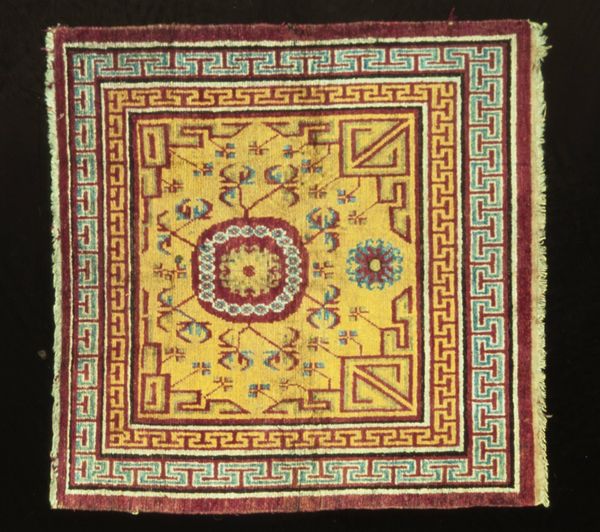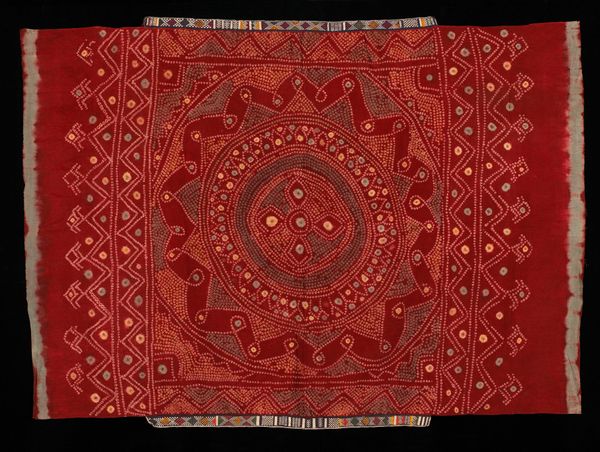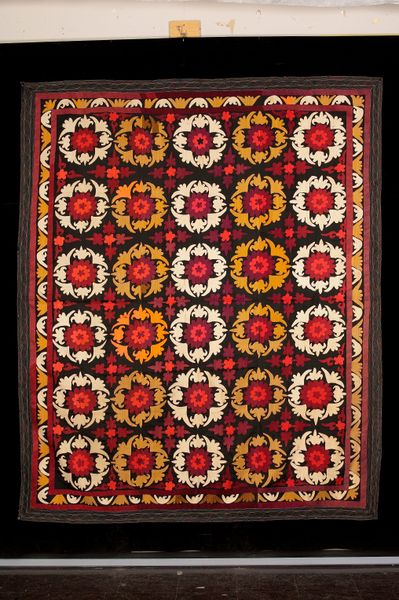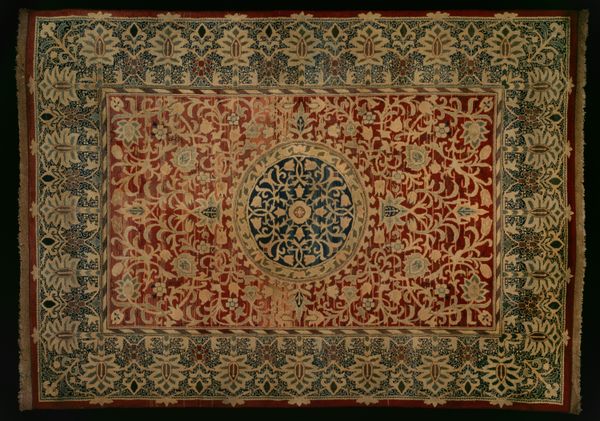
weaving, textile
#
natural stone pattern
#
naturalistic pattern
#
weaving
#
textile
#
geometric pattern
#
abstract pattern
#
organic pattern
#
geometric
#
repetition of pattern
#
intricate pattern
#
pattern repetition
#
layered pattern
#
repetitive pattern
Copyright: Public Domain
Curator: Here we have a Shawl, created circa the 19th century, its origins unknown, although we know it resides here at the Minneapolis Institute of Art. The weaving primarily utilizes wool. Editor: Immediately, I see this as a mesmerizing mandala made of paisley teardrops—it just emanates a certain quietude despite the intricate designs. The color palette also makes it feels very grounding, like warm earth. Curator: Indeed, the textile traditions represented here tap into something primal. Paisley motifs themselves have quite a journey, evolving from ancient symbols of fertility and life to potent signifiers of cultural identity across the globe. What you are seeing resonates deeply. Editor: It is fascinating how these organic, swirling forms have transcended cultures. Do you think there is something innately soothing about repeated patterns that echoes our own biology somehow? Curator: Absolutely! Repetition provides structure and predictability, appealing to our need for order. In this shawl, one detects layering of symbols with personal stories embedded into a collective conscious. Editor: Almost as though it is echoing experiences over time—that is quite a thought! Does the composition hint at any particular symbolism beyond what's easily apparent to us, the modern viewers? Curator: While it’s difficult to ascertain specific meanings without knowing its origin, there is a suggestion of ‘Orientalism’ here in how Eastern artistic traditions and imagery have impacted western visual styles; its cultural resonance speaks across continents—East and West colliding, yet both are very different. Editor: Thinking of what it meant in its original context brings up how abstracted these forms must’ve felt as they made their way through trade routes, their cultural signifiers shifting as they found new lives in Western homes… Curator: Right, it would make a fantastic discussion of how meaning gets reshaped throughout art history as things evolve and travel around in circles. Editor: Looking at the central pattern again, the almost hypnotic density in design feels like an invitation for deeper introspection, no? Curator: Exactly! Symbols have this effect. As objects move across geography and change form along their trajectory they become a new way to look into where humans and objects converge over space-time, in this material world of ours! Editor: Agreed, this piece does so much for those with a keen eye for the ways history takes its course over generations; very beautiful indeed.
Comments
No comments
Be the first to comment and join the conversation on the ultimate creative platform.
